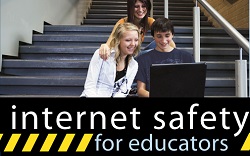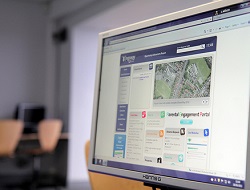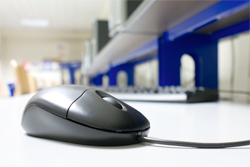Are your students safe online? Students can do almost anything, and go almost anywhere, on the internet - ensure your students stay one step ahead and are e-aware and e-safe. We at Britannica Digital Learning will be sharing how from stand B327 at this year’s Bett Show!
As teachers we are very much aware of the dangers students face online, much more so than the children in our charge. These can be issues of data protection, bullying, hacking and dangers posed by strangers. Of course, protecting children has to be done in partnership with parents, but there is much that can be done in a classroom environment to start raising awareness.
Given Charles Sweeney’s excellent piece about anonymous proxies in schools last week, we decided to revisit a pertinent article written by Alan Mackenzie, Managing Director at SafeICT Consultancy Ltd, from last year.
As published in the March 2013 edition of our magazine.

Debates about internet filtering in schools may never go away - at least not so long as pupils and teachers are prevented from accessing online curriculum resources, and draconian policies are pursued by local authorities or other education bodies. I have visited schools that block as many websites as they realistically can, so afraid are they of the risks to pupils. Ofsted itself frowns on this practice (although I have yet to visit a school that has been asked a question about how they manage internet filtering).
There are three very good reasons why we limit internet access in schools: to safeguard children, to protect the school against liability, and to ensure that pupils use the internet for the right purposes. For the first two of these, a filter - a piece of software that blocks pupils’ access to certain internet content - works reasonably well. Modern filters are relatively good at reducing access to illegal and inappropriate material, and are becoming more difficult to bypass.

Developing an Acceptable Use Policy (AUP) for ICT should include usage of school-based equipment, both wired and wireless networks and infrastructures, for both BYOD and BYOA.
Establishing an overall policy framework for electronic communications should recognise the convergence of communications functions and services.
It should also clarify the applicability of law and other school policies such as data-protection, safe-guarding, health and safety and computer misuse.

The Internet is a wonderful student resource for researching school reports, communicating with teachers, staying in touch with friends, and entertaining themselves. They can literally hit a few keystrokes and find out about culture in China, the history of Europe, or take a tour of the American White House.
But with that access comes risks, even if you’re careful. For example, in our year 3 class project on life cycles, we never allow the students to search “chicks”, rather they must type “baby chickens” to avoid problems.
The digital natives we are educating don’t want to hide from the internet, though. They want to learn to manage it. What we as teachers must do is show them how to avoid the internet’s bad neighbourhoods so they can benefit from the good. Here’s my year-by-year run-down on how to prepare students to thrive in the online world:

A community-driven platform for showcasing the latest innovations and voices in schools
Pioneer House
North Road
Ellesmere Port
CH65 1AD
United Kingdom